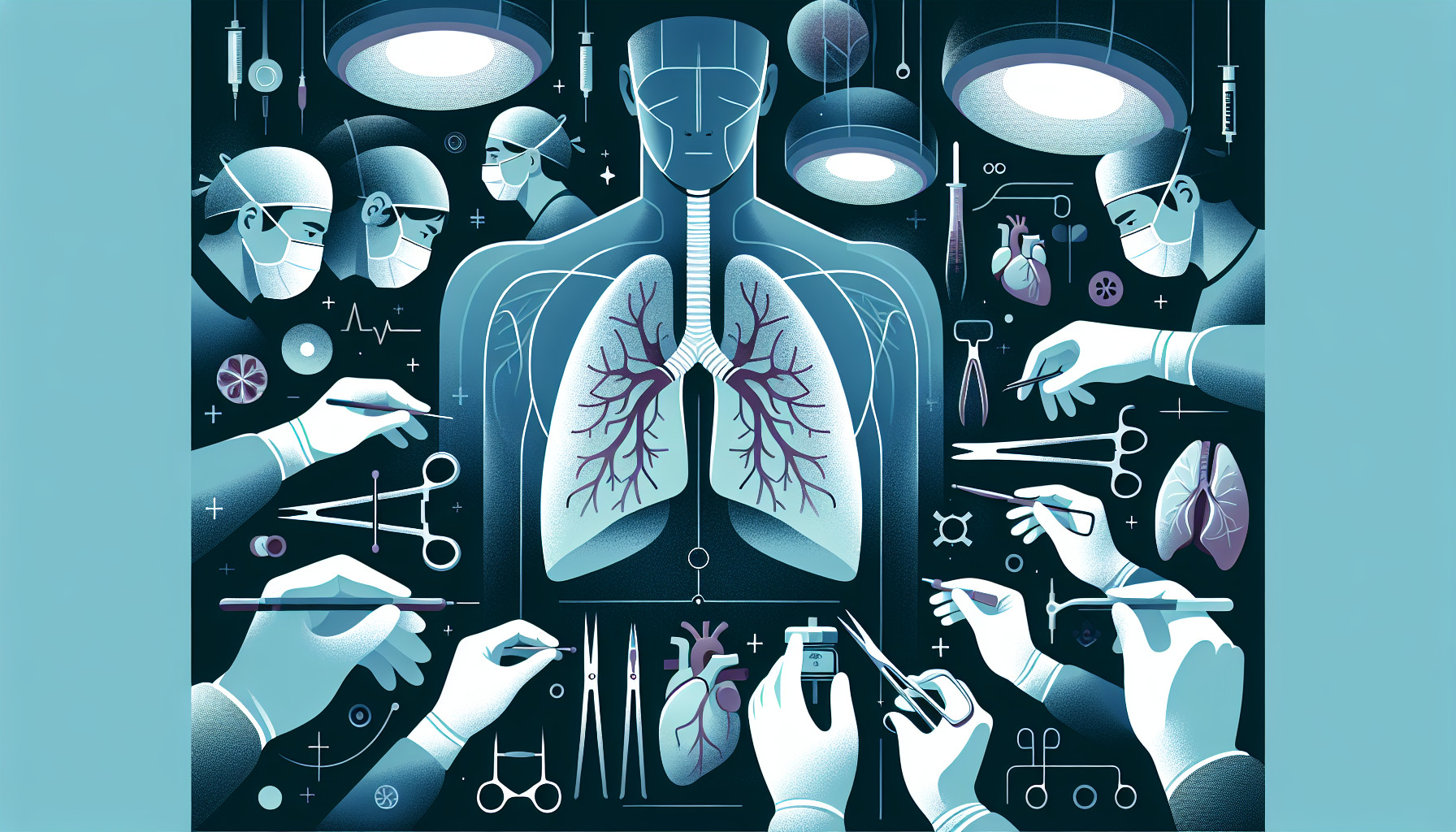Our Summary
This research paper analyzes the relationship between age and survival rates after a lung transplant. The researchers used data from over 14,000 lung transplant recipients aged 18 and above, from 2006 to 2015. They found that age is the most significant risk factor for death after a transplant, and its impact increases as time from the transplant increases. Other risk factors for death included high age extremes, higher creatinine (a waste product that the kidneys filter out of the blood), single lung transplants, being hospitalized before the transplant, and increased bilirubin (a substance that liver produces when it breaks down red blood cells). Interestingly, the factors affecting survival differed by age, with social factors disproportionately affecting the youngest recipients. The findings suggest that there may be opportunities for intervention to improve survival rates after a lung transplant.
FAQs
- What is the most significant risk factor for death after a lung transplant according to the research?
- How does age impact survival rates after a lung transplant?
- Are there other risk factors, apart from age, that can impact survival rates after a lung transplant?
Doctor’s Tip
A doctor might tell a patient that age is a significant risk factor for death after a lung transplant, and that it is important to closely monitor other factors such as creatinine levels, the type of transplant received, and any pre-existing health conditions. They may also recommend maintaining a healthy lifestyle, following a strict medication regimen, attending regular follow-up appointments, and seeking support from a transplant team or support groups. It is important for patients to be proactive in their care and communicate openly with their healthcare providers to optimize their chances of a successful transplant outcome.
Suitable For
Patients who are typically recommended for a lung transplant are those with end-stage lung disease who have exhausted all other treatment options and have a poor prognosis without a transplant. Common conditions that may warrant a lung transplant include:
- Chronic obstructive pulmonary disease (COPD)
- Idiopathic pulmonary fibrosis
- Cystic fibrosis
- Pulmonary hypertension
- Alpha-1 antitrypsin deficiency
- Bronchiectasis
Patients must also meet certain eligibility criteria set by transplant centers, such as being in good overall health aside from their lung condition, having a strong support system, and being compliant with post-transplant medications and follow-up care. Additionally, patients must undergo a thorough evaluation process to determine if they are physically and emotionally prepared for a transplant.
Overall, the decision to recommend a lung transplant is made on a case-by-case basis, taking into consideration the patient’s medical history, current health status, and potential for a successful outcome.
Timeline
Before lung transplant:
- Patient is diagnosed with end-stage lung disease and referred for evaluation for a lung transplant.
- Patient undergoes extensive medical and psychological evaluations to determine if they are a suitable candidate for a transplant.
- Patient is placed on the transplant waiting list and waits for a suitable donor match.
- Patient experiences worsening symptoms and decreased quality of life as they wait for a transplant.
- Patient receives the call that a donor match has been found and undergoes the lung transplant surgery.
After lung transplant:
- Patient undergoes a period of recovery in the hospital, with close monitoring for any signs of rejection or complications.
- Patient is discharged from the hospital and begins a lifelong regimen of immunosuppressive medications to prevent rejection of the new lung.
- Patient attends regular follow-up appointments with their transplant team to monitor their progress and adjust medications as needed.
- Patient undergoes pulmonary rehabilitation to improve lung function and overall physical strength.
- Patient gradually returns to normal activities and experiences improved quality of life compared to before the transplant.
- Patient continues to be monitored for signs of rejection or complications, with the goal of long-term survival and improved quality of life.
What to Ask Your Doctor
- What is the success rate for lung transplants in patients my age?
- What are the potential risks and complications associated with a lung transplant at my age?
- How will my age impact the recovery process and long-term outcomes after a lung transplant?
- Are there any age-related factors that could affect my eligibility for a lung transplant?
- How does age impact the likelihood of rejection or other complications after a lung transplant?
- Are there any specific lifestyle changes or precautions I should take after a lung transplant, considering my age?
- How often will I need to follow up with medical appointments or testing after a lung transplant, especially in relation to my age?
- Are there any support resources or programs available for patients my age who have undergone a lung transplant?
- How does age affect the availability of donor lungs and the overall transplant process?
- Are there any specific considerations or recommendations for patients my age when it comes to post-transplant care and management?
Reference
Authors: Lehr CJ, Blackstone EH, McCurry KR, Thuita L, Tsuang WM, Valapour M. Journal: Chest. 2020 Apr;157(4):907-915. doi: 10.1016/j.chest.2019.06.042. Epub 2019 Aug 13. PMID: 31419403
